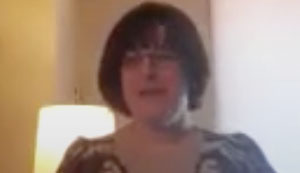Presented by Ronda G. Stoller Wunsch, B.A., M.A.
Certified Yoga Teacher;
Case Manager/Advocate (Dementia & Disabilities)
(416) 783-9323 or (647) 761-9323 (cell) or rondagsw@gmail.com
What is Yoga? Breathing and movement with mindfulness and/or meditation.
Types of Yoga There are many types of yoga that you may have heard of: Yin and Yang, Kundalini, Restorative, Power or Bikram, Ashtanga, Laughter, Hot Yoga among many others. Many classes in the secular community involve teaching yoga as a religion and avoda zara (idol worship), so you need to be careful who your teacher is and where you learn. I usually teach a combination of hatha yoga which comes from an ancient language in Sanskrit which means poses and flow yoga which involves moving from one pose or position to another.
Why seated or chair yoga? Because not everyone can sit on the floor or get up easily once they are down, especially if we have had an injury, how we age, our weight and flexibility., etc. You don’t need any special clothes or equipment. You don’t need to go to a gym or You can do it from the comfort of your home, backyard or car. And G-d willing, once this Covid crisis is over, you can do some of it in your office if you’re still working, on an airplane, in a boat, etc. without people even noticing or thinking that you are doing something strange.
What are the benefits? Increase concentration, lower blood pressure, cholesterol, stress, weight
How much time do you need? A few minutes to two hours any time of the day or night for that matter.
Yoga Breathing So let’s start with the breathe. There are many different types of breathing in yoga:
1) Regular Yoga or diaphramic Breathing: in and out from the nose
2) Cleansing Breath
3) Alternate Nostril Breathing
4) Breath of Fire
And many more.
We usually start and end with Regular Yoga Breathing: four counts in and eight counts out i.e. the exhale is double the length of the inhale. You can count more slowly if you have good lung capacity and more quickly if you don’t.
